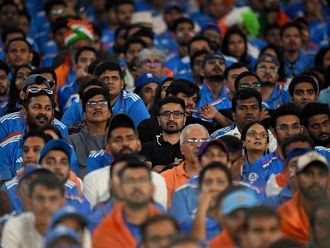
An economic survey titled Thalinomics, like a Big Mac index, released before the annual budget, showed how much Indians have saved on food, both ‘veg’ and ‘non-veg’.
Incidentally, ‘veg’ is an Indianism for vegetarian and ‘non-veg’ is for foods that are not vegetarian and it also denotes jokes that are not appropriate to be told during family gatherings, in front of women or children.
So, I presume if you eat ‘non-veg’ foods such as eggs, chicken, fish, goat and buffalo meat, then you are as inappropriate as a smutty joke told in a public setting.
But I digress, the survey showed that a Thali meal has become cheaper because of the government’s fiscal and other policies and now a family of five, eating two thalis a day saves on an average Rs10,887 (roughly about Dh557/year or $151/year).
I love eating a thali meal because it is nutritious (though how nutritious is debatable since Indians overcook their vegetables, fry them in tons of oil and eat mounds of rice with dollops of ghee).
The cheapest ‘thali’ can be found in Jharkhand state (in eastern India) but I would have loved to know which state has the tastiest ‘thali’.
A regular thali has 350 gm of cereals (rice and wheat), 150 gm of vegetables (potato, onion, tomato, brinjal (eggplant or aubergine), cabbage, cauliflower and okra (known as lady’s finger in India), dal or pulses (lentils), moong (green gram), masoor (red lentils) and urad (black gram).
An Arab friend once told me that Indians eat very small portions, when she looked into colleagues’ lunch boxes. I should have said that Indians now overeat vast amounts of junk food and are getting as obese as many Arabs.
A ‘non-veg’ thali incidentally, will replace the dal with eggs, goat meat, etc.
The thali (plate in Hindi) BTW, is a round stainless dish with an extended lip which helps hold small stainless bowls around its edge.
The one good thing about a stainless thali is that it cannot be broken when washing, but they make a horrible racket when they are washed, and especially when you think of having a quiet lunch at a vegetarian restaurant and plate washing is happening in the background in the kitchen.
‘Bananaleafonomics’
I am not sure how eating from a banana leaf evolved to a thali over the years, but I suppose it had something to do with a family’s stature and standing in the society, to be offering food in a plate rather than on a leaf.
Eating from a banana leaf is more traditional, at least in the south of the country, as it is more eco-friendly and guests in weddings and other occasions are offered food on a banana leaf.
The banana leaf can be trashed easily and does not need a thousand years to disintegrate, but it definitely requires dexterity and nimble fingers to eat a liquidy sweet that is ladled on to the leaf, as it can flow away on to the table.
The economic survey should have kept up with the times and labelled it ‘bananaleafonomics’ as people are becoming more aware of climate crisis and about the need to save the environment.
The survey said the cheapest thali can be found in Jharkhand state (in eastern India) but I would have loved to know which state has the tastiest thali. Once I had a Rajasthani thali meal in a mall food court and it seemed tasteless to me, maybe because I am a Hyderabadi who eats raw green chillies with flat bread.
Incidentally, the Big Mac Index was invented by the Economist magazine to show whether a country’s currency is overvalued or undervalued by dividing the cost of a Big Mac in one country (in the local currency) by its price in the US.
— Mahmood Saberi is a storyteller and blogger based in Bengaluru, India. Twitter: @mahmood_saberi







